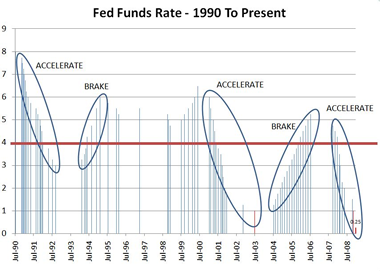The Climate Elephant In The Room
SEARCH BLOG: CLIMATE
The science is settled, Gore told the lawmakers. Carbon-dioxide emissions — from cars, power plants, buildings and other sources — are heating the Earth's atmosphere. [NPR]So why is the debate so rancorous if Al Gore, Nobel prize winner, is correct?
Here is an example:
The Buddha here tells the story of a king who had six blind men gathered together to examine an elephant.
- "When the blind men had each felt a part of the elephant, the king went to each of them and said to each: 'Well, blind man, have you seen the elephant? Tell me, what sort of thing is an elephant
The six blind men assert the elephant is either like a pot (the blind man who felt the elephants' head), wicket basket (ear), ploughshare (tusk), plough (trunk), granary (body), pillar (foot), mortar (back), pestle (tail) or brush (tip of the tail).
The men cannot agree with one another and come to blows over the question of what an elephant really is like, and this delights the king. The Buddha ends the story of the king and compares the six blind men to preachers and scholars who are blind and ignorant and hold to their own views: "Just so are these preachers and scholars holding various views blind and unseeing.... In their ignorance they are by nature quarrelsome, wrangling, and disputatious, each maintaining reality is thus and thus." The Buddha then speaks the following verse:
- O how they cling and wrangle, some who claim
- For preacher and monk the honored name!
- For, quarreling, each to his view they cling.
- Such folk see only one side of a thing.[2]
Mainstream climate scientists say they have kept an open mind but have rejected papers that lack proper evidence. In Pielke’s case, “the literature doesn’t show” his ideas about the importance of land use are correct, said Tom Karl, head of the NOAA’s National Climatic Data Center.”
This can easily be refuted in national and international assessments; e.g.
National Research Council, 2005: Radiative forcing of climate change: Expanding the concept and addressing uncertainties. Committee on Radiative Forcing Effects on Climate Change, Climate Research Committee, Board on Atmospheric Sciences and Climate, Division on Earth and Life Studies, The National Academies Press, Washington, D.C., 208 pp
where one excerpt reads
“Several types of forcings—most notably aerosols, land-use and land-cover change, and modifications to biogeochemistry—impact the climate system in nonradiative ways, in particular by modifying the hydrological cycle and vegetation dynamics. …….Other nonradiative forcings modify the biological components of the climate system by changing the fluxes of trace gases and heat between vegetation, soils, and the atmosphere and by modifying the amount and types of vegetation. …… Nonradiative forcings have eventual radiative impacts, so one option would be to quantify these radiative impacts. However, this approach may not convey appropriately the impacts of nonradiative forcings on societally relevant climate variables such as precipitation or ecosystem function.”
Read more....








